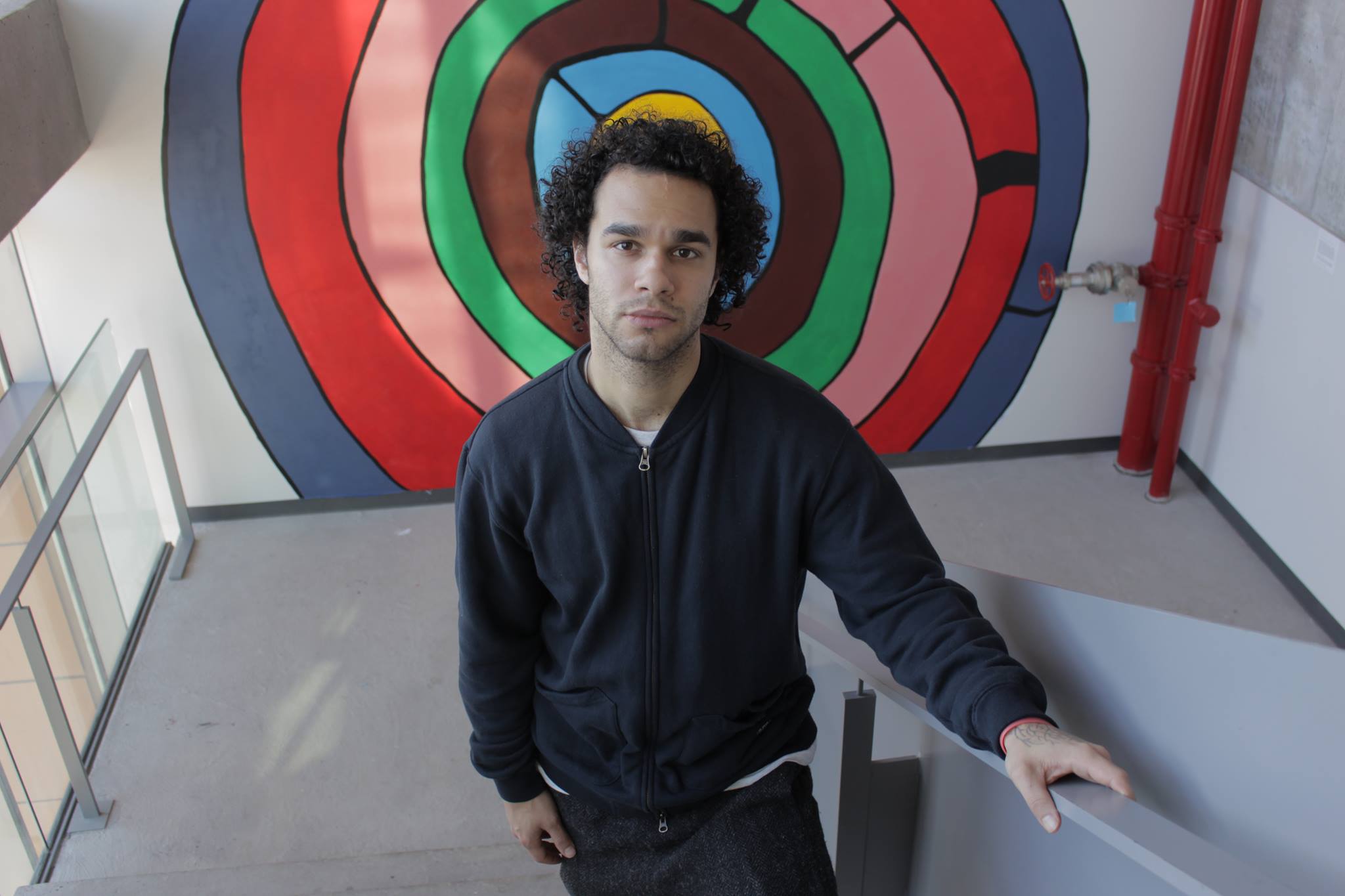After releasing his EP, Eternally the Student, the rapper returned to study jazz at Concordia
For Milla Thyme, rapping is about bringing light to important social matters. “You have to talk about things that are unjust and speak about them,” he said. Milla Thyme fuses a mix of soul, hip hop, and jazz into his music. Milla Thyme is the MC name of Concordia student Max Miller. It’s a name he developed in his early teens. “Milla Thyme is 100 per cent me. It’s when I’m playing bass and rapping and I’m writing all the music myself,” he said.
The MC can be spotted at Le Cypher, a popular hip-hop jam session party at Le Bleury-Bar à Vinyle, which takes place almost every Thursday night. It’s one of his favourite Montreal hotspots. In fact, the rapper said it’s like his second home. “We get 150 people average per week so it’s a good platform for people to see you perform regularly,” he said.
People from all walks of life can get a chance to come up on stage during Le Cypher and try out rapping—even if they’ve never done it before. “It’s a safe space for people to communicate,” Miller said. “You get people of all different genders, ages, sexual orientation. We don’t care. We’re all the same, right?” Miller has been rapping and playing bass with the band Urban Science at Le Cypher almost every Thursday night. The band is comprised of about 20 to 25 artists, some of whom played on his recent EP, Eternally the Student. “It was my friend Thomas Lafrance, a.k.a T-Cup, on the drums,” Miller said. “And then on keys we had one of the baddest under-25 keyboard players in the city, named Nicolas Dupuis, who goes by the name Anomalie. I’m just so grateful that he had the time to play with us.”
Urban Science has also played at many popular venues in Montreal, including the Jazz Festival two years in a row, which Miller said he’s grateful to have been a part of. “That group has taken me to amazing places,” he said. For the rapper, there is no better feeling than freestyling on stage during Le Cypher nights. “It’s like having an amazing orgasm, a sweet release. It’s one of the best feelings, a natural high,” he said.
When he’s not busy performing as Milla Thyme, Miller is focused on his jazz studies program at Concordia. He said it’s important for him to keep up his studies, to never stop learning or growing, both as a person and as a musician. The artist is also the president of Concordia’s Hip Hop Community, a student club that holds rap battles for social justice. Each week, a different social issue is addressed at the rap battles, such as police brutality and gender inequality. The club also holds workshops that allow people to work on different elements and aspects of hip hop, and allow them to share their music with others on stage.
“It’s a good way for Concordia students and members of the community who don’t have much experience but want to be involved with hip hop and social consciousness,” Miller said. A rap battle on police brutality will be held on Feb. 15 at the Le Belmont nightclub on St-Laurent. The proceeds for this event will be going to Montreal Noir, which Milla Thyme said is a socially-conscious group advocating equality. Miller feels very lucky to have always been pushed to chase his dreams by his parents, who are artists themselves. “Michael Miller, my dad, is actually the most produced black playwright in Canada. And my mom was a TA at Juilliard in her 20s,” he said. “My parents are both established in their careers. They told me, if I’m going to pursue arts, that I have to [give it] my 100 per cent.”
This support really helped Miller overcome the struggles involved with creating his music. “I think the biggest challenge we all face is ourselves,” he said. “That’s always the biggest challenge because it’s an internal conflict, just questioning [yourself], like we all do, in some way. That’s something, as an artist, you deal with a lot.” Miller said artists like Kendrick Lamar and J-Cole allowed him to forget about the hardships of the music industry. Through their meaningful lyrics, they inspired him to focus on being real in his music as well. “They gave me a renewed sense of purpose,” he said.
Miller’s EP, Eternally a Student, which was released in October, touches on deep subjects that truly matter both in his own life and in society. The songs, he said, are a true representation of what was going on in his life as well as what he saw going on around him. For the artist, that’s the ultimate goal: to express himself in a way that can be relatable to someone else. “I hope my music can help people in their day-to-day, and if someone’s going through something, that it helps them get through that,” he said.
If there’s anything Miller wants artists to take from his story, it’s that the most important thing is to believe in yourself, and in your own music. “Just keep pushing,” he said. “Don’t give up, and just know that no one can tell your music better than you can.”
